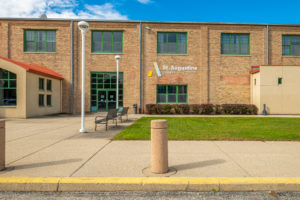History of Bilingual Education in the Midwest

10/19/23
The History of Bilingual Education in the Midwest
The evolution of bilingual education in the United States is a reflection of the nation’s vast range of cultures, languages, and beliefs. Tracing from Ohio’s initial embrace of German-English classes to the struggles of modern bilingual schools, this topic is as diverse as the country itself.
The Early Stages of Bilingual Instruction
During the early 1800s, areas influenced by immigrant communities began recognizing the value of bilingualism in the US. Ohio pioneered a movement in 1839 to become the first state to allow instruction in both German and English based on parental preference.
Similar initiatives sprouted in regions like Louisiana for the French, and in New Mexico for the Spanish. As we approached the 20th century, diverse immigrant populations meant that classrooms in places like Chicago adopted bilingual classes in multiple languages, from Italian and Polish to Cherokee.
The Push for ‘Americanization’
Yet, the onset of World War I brought about a significant shift in public opinion. Concerns about the allegiance of non-native English speakers led to the adoption of English-centric instruction laws in many states. These laws aimed to assimilate these groups into a more “American” way of life.
Some policies even went to extremes, curbing the teaching of foreign languages for students. Although such stringent measures were eventually challenged and overturned by the mid-1920s, bilingual education in the United States faced a downturn, with many communities feeling the societal pressure to lean towards English.
The 20th Century Bilingual Revival
As the decades rolled on, it became clear that English-focused approaches were not serving all students well, as dropout rates increased among non-native English speakers. Recognizing this, there was a renewed interest in bilingual schools during the latter half of the 20th century. Cities like Chicago were at the forefront of this revival. From starting a program tailored for Spanish-speaking students at the Lafayette School in the late 1960s, the city saw a surge in bilingual schools within a few years, catering to a spectrum of languages from Arabic to Greek.
Legislative milestones and landmark Supreme Court decisions played pivotal roles in ensuring students from diverse backgrounds had equitable educational opportunities:
The Bilingual Education Act of 1968:
- Introduced during The Civil Rights Movement when there was a large emphasis on education reforms.
- The act provided federal funding to school districts to assist them in addressing the educational needs of children with limited English-speaking abilities.
- It recognized that students who were not proficient in English needed additional support to achieve the same educational outcomes as their peers.
Bilingual Education Act of 1974:
- This was a vital amendment to the 1968 Act that emphasized transitional bilingual education, where students were to be taught in their native language while simultaneously learning English.
- It ensured a more structured approach, and the implementation of the act established proper evaluation methods to monitor student progress.
Lau v. Nichols (1974):
- A landmark Supreme Court decision that stemmed from a lawsuit in San Francisco.
- The court ruled that students who did not speak English as their first language were entitled to special assistance in school.
- This verdict highlighted that simply providing the same textbooks and lessons to all students, regardless of their English proficiency, was a violation of their rights under the Civil Rights Act of 1964.
Modern Challenges and Triumphs
Today’s landscape for bilingual education in the United States is met with both enthusiasm and challenges. Reflecting on Chicago’s progression, by the close of the 20th century, the city’s bilingual schools had expanded significantly. In 1980 St. Augustine College became the first bilingual higher education institution in the Midwest, Yet, hurdles like staffing shortages and debates surrounding the optimal duration of bilingual classes are at the forefront of the field.
With increasing emphasis on standardization and English proficiency testing, there’s debate on the right balance between bilingualism in the US and English-centered instruction. Yet, the core value of bilingual schools fostering mutual cultural understanding and cognitive advantages stands strong.
Why is Bilingual Education Important?
Beyond history and laws, let’s delve into the heart of the matter. Why is bilingual education in the United States so crucial?
- First, bilingual schools enhance cognitive abilities. Multilingual individuals often exhibit better problem-solving skills, creativity, and multitasking abilities.
- Second, in a world that’s increasingly globalized, being bilingual opens doors to diverse cultures, enhancing cultural sensitivity and appreciation.
- Lastly, bilingualism in the US is a valuable asset in the global job market. Many American industries and employers place a premium on bilingual skills, from healthcare to international business.
Bilingual education promotes unity in a nation filled with diversity. By understanding and valuing multiple languages, we send a clear message: every culture and language enriches the United States.
St. Augustine’s Legacy: Championing Bilingualism for Leaders of Tomorrow
The journey of bilingual education in the United States, marked by milestones like the Bilingual Education Act and Lau v Nichols, underscores the nation’s evolving understanding and appreciation of linguistic diversity.
Institutions like St. Augustine College in Chicago play a pivotal role in this endeavor, championing the importance and benefits of bilingual education. To truly grasp the future of bilingual education in the United States and its profound impact on society, understanding its rich history is essential. For those passionate about this field, institutions like St. Augustine College are paving the way for a brighter, more inclusive future. Dive deeper into bilingual education and be part of the change you wish to see in the world.




